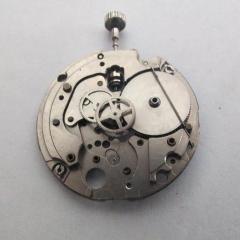How can I handle these tiny cap jewel springs for the escape wheel
-
Similar Content
-
Recently Browsing
- No registered users viewing this page.
-
Topics
-
Posts
-
My new to me staking set has this item can anyone tell me what it is used for? The staking set is an MKS
-
By watchweasol · Posted
Hi @Michael20 I think you can get them off eBay. I use the spare ones fron ink cartridge refills, the ends are square cut but will file easy enough. @RichardHarris123 the greaseproof paper trick I believe was to remove marks using a warm not hot iron problem being not melting the veneer glue which is animal based. -
By watchweasol · Posted
Hi @JonC I worked in York for 7 to 8 years, lived in Tadcaster at the time nice old city still got family there. -
By Neverenoughwatches · Posted
I know Stephen there was no way i was paying out for a brand name, being yorkshire born and bred i go direct to an ingredient and hope its just one. I've had a big jewel suspended over a jar of 90° heated stearic acid for 5 hours , its time to oil it up. No idea if i reached enough temperature but it was a bit wiffy so i assume fumes were produced. Well its certainly fumigated the jewel, it looks like a thick coating of frost 🤣
-








Recommended Posts
Join the conversation
You can post now and register later. If you have an account, sign in now to post with your account.
Note: Your post will require moderator approval before it will be visible.